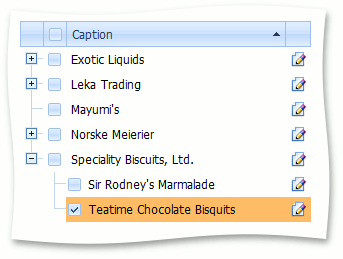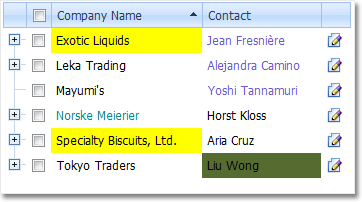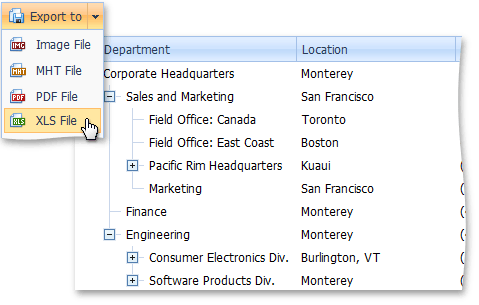ASPxTreeListEditor Class
Represents an ASP.NET Web Forms List Editor that displays data in the form of a tree-like structure.
Namespace: DevExpress.ExpressApp.TreeListEditors.Web
Assembly: DevExpress.ExpressApp.TreeListEditors.Web.v24.1.dll
NuGet Package: DevExpress.ExpressApp.TreeListEditors.Web
Declaration
public class ASPxTreeListEditor :
ComplexWebListEditor,
INodeObjectAdapterProvider,
ITestable,
ISupportCallbackStartupScriptRegistering,
IDataItemTemplateInfoProvider,
ISupportSelectionOperations,
IExportable,
ISupportFooter,
ISupportPager,
ISupportAppearanceCustomization,
ICustomRenderUpdatePanel,
IFastCallbackHandlerSupported,
ISupportScriptRecorderRemarks
List Editors are used by List Views to display object collections in a UI. The ASPxTreeListEditor is implemented in the TreeList Editors module, and displays data in the form of a tree:

To display object collections, the ASPxTreeListEditor uses an instance of the ASPxTreeList class as the underlying control.
The ASPxTreeListEditor supports the following feature out of the box:
Implements the ISupportAppearanceCustomization interface - supports conditional appearance:

Implements the IExportable interface - can be exported via the ExportController:

Since it is not possible to represent an arbitrary object collection in the form of a tree, the objects that will be displayed via the ASPxTreeListEditor must implement the ITreeNode interface. To learn how to implement this interface, refer to the Display a Tree List using the ITreeNode Interface topic.
For additional information on the ASPxTreeListEditor and an overview of the TreeListEditors module, refer to the TreeList Editors Module Overview topic.
Note
ASPxTreeListEditor supports only Client mode (CollectionSourceBase.DataAccessMode).